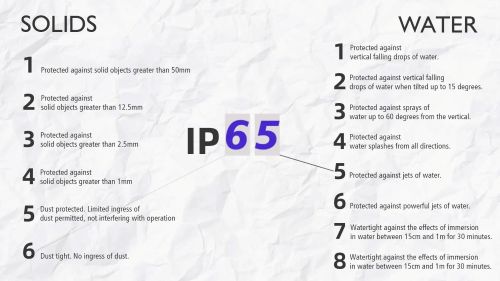Understanding IP and IK Ratings for EV Charging Stations: A Guide for Businesses
Introduction
As electric vehicle (EV) adoption accelerates worldwide, the demand for reliable, durable charging infrastructure has surged. For businesses investing in EV charging stations, selecting equipment that can withstand environmental stress and physical impact is crucial. Two key international standards—IP (Ingress Protection) and IK (Impact Protection) ratings—play a vital role in determining a charger's resilience. Know more about Google SEO Directory
This article explores the significance of IP and IK ratings, highlights their differences, and provides guidance on how to choose the right protection levels for your EV charging infrastructure.
What Are IP Ratings?
IP ratings, governed by the IEC 60529 standard, measure how well an electrical enclosure is protected against the intrusion of solid objects (like dust) and liquids (like water). An IP rating is expressed as IP followed by two digits:
- First digit (0–6): Protection against solid particles
- Second digit (0–9): Protection against liquids
Common IP Ratings for EV Chargers
RatingDust ProtectionWater ProtectionIdeal Use CaseIP54Limited dust ingressProtected from water splashes (all directions)Outdoor use in moderate environmentsIP65Dust-tightProtected from low-pressure water jetsIndustrial areas or regions with heavy rainIP67Dust-tightWithstands temporary immersion (up to 1m depth)Flood-prone or harsh outdoor environments
Why IP Ratings Matter
Choosing the right IP rating ensures that your EV charger performs reliably in different environmental conditions—whether exposed to rain, snow, dust, or water spray. This is particularly important for outdoor installations or rugged deployment environments.
What Are IK Ratings?
IK ratings (IEC 62262) measure a product’s ability to withstand mechanical impacts. Ranging from IK00 (no protection) to IK10 (highest protection), these ratings indicate the level of physical force an enclosure can resist.
RatingImpact Energy ResistanceEquivalent Force ExampleIK085 joules1.7 kg object dropped from 29.5 cmIK1020 joules5 kg object dropped from 40 cm
Why IK Ratings Matter
High IK ratings are essential for public or high-traffic installations where chargers may be subject to:
- Accidental damage (e.g., vehicle bumping, dropped tools)
- Vandalism
- Harsh industrial use
By choosing EV chargers with sufficient IK ratings, you protect your investment and reduce maintenance or replacement costs.
IP vs. IK Ratings: What’s the Difference?
CriteriaIP RatingIK RatingFocusProtection against dust and waterProtection against mechanical impactsStandardIEC 60529IEC 62262MeasurementSolid/liquid ingressImpact energy in joulesImportanceEnsures functionality in varying environmentsEnsures physical durability in public locations
Both ratings are essential—IP for weather and environmental exposure, IK for physical robustness.
How to Choose the Right IP and IK Ratings for Your EV Charger Business
1. Assess Installation Environment
- Outdoor areas: Choose IP65 or IP67 for protection against rain, dust, and immersion.
- Indoor or sheltered locations: IP54 may be sufficient if not exposed to severe elements.
2. Evaluate Foot Traffic and Public Exposure
- High-traffic areas (malls, parking lots): Go for IK08 or IK10 to resist frequent or forceful impact.
- Private installations: Lower IK ratings may suffice if there’s limited risk of damage.
3. Consider Vandalism Risk
In urban settings or unsupervised locations, higher IK ratings are critical to guard against intentional damage.
4. Balance Protection with Budget
Higher-rated enclosures cost more, so consider:
- Long-term ROI from reduced maintenance
- Likelihood of exposure to weather or vandalism
- Whether added durability is justified by the operating environment
5. Consult with EV Charger Manufacturers
Professional manufacturers can recommend the most cost-effective IP/IK combinations based on:
- Your geographic region
- Type of property (e.g., commercial, residential, industrial)
- Target users and usage intensity
Conclusion
IP and IK ratings are essential benchmarks for selecting EV chargers that can perform reliably under diverse environmental and mechanical conditions. While IP ratings safeguard against dust and water, IK ratings ensure durability against impact.
By carefully assessing your installation site, traffic volume, and exposure risk, you can choose chargers that balance durability with cost-effectiveness. This not only protects your equipment but also enhances the user experience, minimizes downtime, and ensures long-term operational success.
As the EV charging landscape continues to expand, understanding and applying these protection standards will be key to building a resilient and future-proof charging infrastructure.





Comments